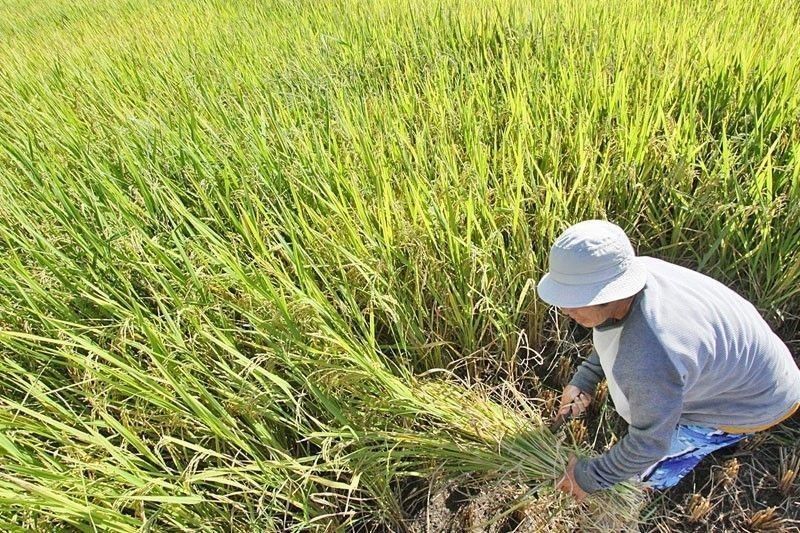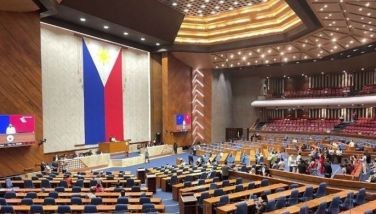House to restore P10 billion palay-buying fund

MANILA, Philippines — The House of Representatives will work for the restoration of next year’s P10-billion palay-buying fund, which the Senate inexplicably cut by P3 billion.
“We will propose the return of the P3 billion to the budget of the National Food Authority (NFA). We are trying to give the agency more money so it can buy more palay and, in the process, force prices for the rice farmers’ produce to go up,” Minority Leader Bienvenido Abante Jr. said yesterday.
He said he would submit his proposal to the House panel in the bicameral conference on the budget, of which he is a member.
Rep. Isidro Ungab of Davao City, who heads the appropriations committee, and his Senate counterpart, Sen. Sonny Angara, co-chair the conference.
The Ungab panel held a closed-door meeting yesterday to tackle the P3-billion palay procurement fund reduction and billions in other realignments made by the Senate in its version of the 2020 budget.
Deputy Speaker Aurelio Gonzales Jr. of Pampanga, another House budget conferee, said there is no basis to reduce the palay-buying fund.
“We should even increase it if we can to allow the NFA to buy more palay. It is important that the government should be able to increase palay prices beyond the production cost of P12-P13 per kilo so that farmers will recover their losses in the last cropping season,” he said.
He said the 6,000 farmers in his district lost P4 per kilo, since they sold their produce only at P9, when their cost was P13.
At an average yield of 70 50-kilo bags per hectare, Gonzales added that his farmers lost at least P84 million.
The P3 billion the Senate took away from the palay procurement fund could buy 150 million kilos, or three million 50-kilo bags, at P20 per kilo, NFA’s price for dry palay. The agency offers a much lower price for wet palay.
This means that the NFA, using P3 billion, could buy the produce of almost 43,000 farmers owning one hectare each and individually harvesting 70 cavans.
The original P10-billion fund would allow the agency to buy 10 million cavans from nearly 143,000 farmers at an average of 70 cavans each.
It was learned from the House contingent in the budget conference that the Senate shaved P3 billion from the palay-buying fund upon the initiative of Sen. Cynthia Villar, who chairs the committee on agriculture.
In a text message to The STAR, Angara’s office said Villar diverted the P3 billion to the Land Bank, which would make the funds available to the NFA as a loan.
Members of the Ungab contingent wondered why the P3 billion was moved from the NFA to Land Bank.
They said Land Bank is not authorized to buy palay from farmers, since such authority belongs to the NFA.
“If the intention is for Land Bank to eventually give the P3 billion to the NFA as a loan, then why transfer it in the first place? Why give it to NFA as an interest-bearing loan when the House wanted it as a no-interest allocation for palay procurement?” they asked.
Raising level of help to farmers
At an event in Rosales, Pangasinan on Sunday, Agriculture Secretary Wiliam Dar told local reporters that President Duterte has given them directives to help raise the level of assistance to farmers and fishermen, and said the Rice Tariffication law provides a six-year investment for rice farmers.
He added that this year, P5 billion was for a grant for farm machineries, P3 billion for seed distribution of inbred rice, P1 billion for additional credit and P1 billion for extension services.
“This is continuing,” Dar said.
He said on top of these, there are many programs that the Department of Agriculture has for farmers in partnership with local government units (LGUs) and other stakeholders.
Dar also said that there are LGUs that also buy palay from farmers but since harvest is over, the NFA is taking up the cudgels in most of the provinces.
The agriculture secretary added that there is a sizable volume of imported rice, approved by the Bureau of Plant Industry, that has been ordered but is yet to arrive.
“Many are still pending,” he said, adding that he cannot say the exact volume.
Dar said the President’s directive is to tighten the guidelines .
“The importer has to meet all these guidelines before we issue import clearance of rice,” he added. – With Eva Visperas
- Latest
- Trending





























